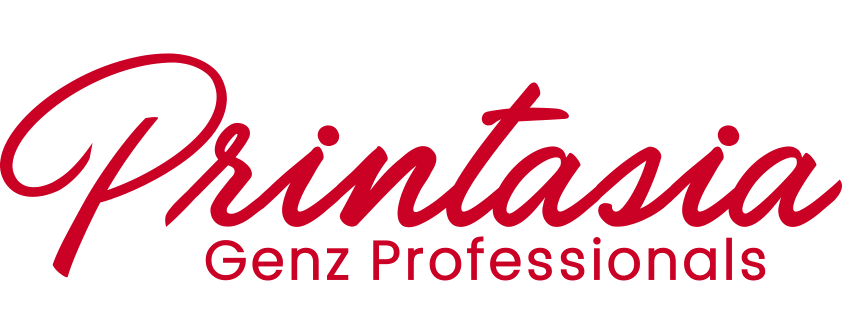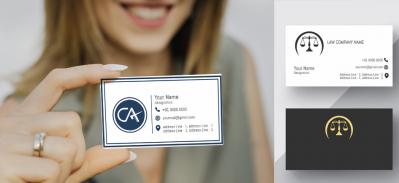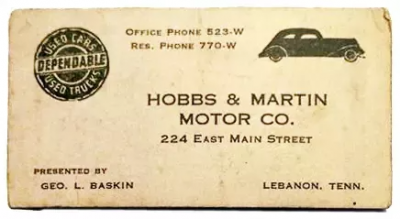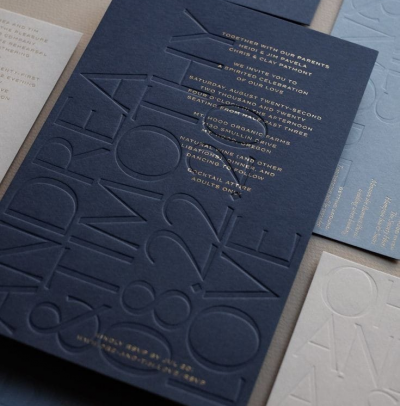Designing a Real Estate Visiting Card That Sells: The Influence of First Impressions
Designing a Real Estate Visiting Card That Sells: The Influence of First Impressions
In the world of real estate, where the market is highly competitive, making a lasting first impression is crucial. Whether you're a real estate agent, broker, or property developer, your visiting card can be a powerful tool for leaving a positive and memorable impact. This small piece of cardstock isn't just a contact information carrier; it's a reflection of your professionalism, trustworthiness, and the value you bring to your clients. In this blog, we'll explore the art of designing a real estate visiting card that not only leaves a lasting impression but also helps you sell properties more effectively.
The Significance of a Real Estate Visiting Card
Why is a real estate visiting card so important? Let's dive into its significance:
- First Impressions: In a competitive market, you often have just one chance to make a great first impression. A well-designed real estate card is your introduction, setting the tone for future interactions.
- Professionalism: A high-quality card conveys professionalism and attention to detail. It suggests that you take your real estate business seriously, and in turn, clients and partners are more likely to take you seriously.
- Credibility: When you hand over a real estate card, you're also giving clients a sense of security and credibility. It shows that you're a legitimate player in the market.
- Convenience: A card provides clients with your contact information in a convenient and easy-to-remember format. No need to scribble down phone numbers or email addresses; just hand over the card.
- Marketing Tool: Your card is a subtle marketing tool. It can feature your brand's logo, slogan, and even a high-quality property image, subtly promoting your business with each exchange.
- Networking: Real estate often relies on building relationships. A card is a powerful networking tool that allows you to connect with potential clients, partners, and other professionals in the industry.
Real Estate Business Card Design Tips for Lasting Impressions
To create a real estate visiting card that sells, consider these design tips to leave a lasting impression:
- Minimalistic Elegance: A clean, uncluttered design exudes elegance. Use minimalistic layouts, a sleek typeface, and quality paper. A simple black-and-white color scheme with a subtle logo can be striking.
- High-Quality Imagery: If you choose to include a property image, make sure it's high-quality. Blurry or pixelated images can undermine your professionalism. Consider using images of your most impressive listings.
- Brand Consistency: Ensure that your card design is consistent with your brand. Use the same logo, color palette, and fonts as your other marketing materials to maintain brand recognition.
- Readable Typography: Choose readable fonts. You don't want your clients to struggle to read your contact information. Legibility is key. It's a business card, not a test of deciphering fonts.
- Incorporate a QR Code: A QR code can link to your website or a specific property listing. It's a convenient way for clients to access more information about you and your listings.
- Modern Aesthetics: While classic designs are elegant, consider adding a modern touch. This could be through a sleek, minimalistic design with clean lines and ample white space.
- Double-Sided Design: Don't overcrowd one side of the card. Utilize both sides for maximum impact. You can feature your name, title, and contact information on one side, and a stunning property image on the other.
- High-Quality Paper: Invest in high-quality, heavy cardstock. It not only feels good to the touch but also conveys a sense of substance and professionalism.
- Incorporate a Slogan: A catchy slogan can succinctly capture your approach to real estate. For example, "Turning Houses into Homes" or "Selling Dreams, Not Just Properties."
- Creative Die-Cuts: If you want to make your card memorable, consider custom die-cuts. These unique shapes or patterns can add a touch of creativity to your design.
- Testimonials: Include a brief client testimonial on the back of your card. A real-life endorsement from a satisfied client can boost your credibility and reassure potential clients.
- Easy-to-Read Contact Information: Ensure that your contact information, including phone number and email address, is easy to read. Use a font size that doesn't require a magnifying glass.
Creating a Winning First Impression: Real Estate Visiting Card
The first impression is often the one that sticks. To create a real estate visiting card that leaves a winning first impression, follow these steps:
- Keep it Professional: Your card should exude professionalism. This means no gimmicks, inappropriate humor, or overly casual designs. Remember, it's a reflection of your real estate business.
- Highlight Your USP: What makes you stand out in the real estate market? Is it your years of experience, your knack for finding dream homes, or your dedication to first-time buyers? Highlight your unique selling proposition on the card.
- Feature Your Best Work: If you have a featured property or a recent successful sale, consider adding it to your card. A visually appealing property image can leave a strong impression.
- Quality Over Quantity: You don't need to add a laundry list of contact numbers and email addresses. Keep it clean, with only the most important and relevant information.
- Simplicity Sells: While creativity is important, don't go overboard. A simple and elegant design often leaves a more lasting impression than a cluttered or flashy one.
- Consistent Branding: Ensure your card is in line with your branding. If you've recently updated your logo or brand colors, make sure your card reflects these changes.
- Quality Printing: Choose a reputable printing service. A professionally printed card reflects your commitment to quality and attention to detail.
- Respect White Space: White space or negative space is your friend. It prevents your card from feeling cluttered and directs the viewer's attention to the most important elements.
- Networking Tools: A real estate card should not only be for clients but also networking. Add your LinkedIn or other professional network profile links to encourage potential partners or referrals.
- Sturdy Material: A flimsy card can feel cheap and unprofessional. Invest in a thicker cardstock to convey a sense of substance and reliability.
The Art of Crafting a Real Estate Visiting Card That Sells
Crafting a real estate visiting card that sells involves creativity and attention to detail. Here's how to ensure your card is a powerful sales tool:
- Quality Photography: Whether it's your own portrait or property images, invest in professional photography. High-resolution, well-lit photos add a touch of class and showcase your commitment to quality.
- Emphasize Success Stories: Have you helped clients find their dream home or made a record sale? Feature these success stories or properties on your card. It builds confidence and trust in your abilities.















